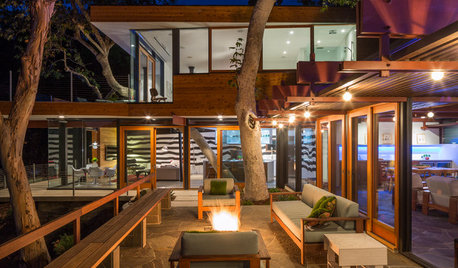Ficus benjamina
tifflj
10 years ago
Related Stories

HOUSEPLANTS8 Essentials for Healthy Indoor Plants
Houseplants add so much to our homes — and can thrive when grown in the right conditions. Keep these tips in mind
Full Story
HOUSEPLANTS10 Top Plants to Grow Indoors
Brighten a room and clean the air with a houseplant that cascades artfully, stretches toward the ceiling or looks great on a wall
Full Story
DECORATING GUIDESDitch the Rules but Keep Some Tools
Be fearless, but follow some basic decorating strategies to achieve the best results
Full Story
HOUSEPLANTS8 Houseplants You Can't Kill
They're forgiving and let you forget. Houseplants don't get any easier than this
Full Story
TREESHow to Use Trees Inside
Bring nature close by integrating the beauty of trunks and trees — even smaller leafy trees — into your home
Full StorySponsored
More Discussions








asleep_in_the_garden
tapla (mid-Michigan, USDA z5b-6a)
Related Professionals
New Bedford Landscape Architects & Landscape Designers · Glassmanor Landscape Architects & Landscape Designers · Roxbury Crossing Landscape Architects & Landscape Designers · Clearlake Landscape Contractors · Ellensburg Landscape Contractors · Fort Worth Landscape Contractors · Lexington Landscape Contractors · Lyndhurst Landscape Contractors · Mastic Beach Landscape Contractors · Reedley Landscape Contractors · San Rafael Landscape Contractors · Yukon Landscape Contractors · Golden Valley Landscape Contractors · Fort Smith Interior Designers & Decorators · Nashville Interior Designers & Decoratorsasleep_in_the_garden
tropicbreezent
stewartsjon
jujujojo_gw
teengardener1888
stewartsjon
The Ficus Wrangler
tapla (mid-Michigan, USDA z5b-6a)
stewartsjon
teengardener1888
jujujojo_gw
tapla (mid-Michigan, USDA z5b-6a)
tapla (mid-Michigan, USDA z5b-6a)
The Ficus Wrangler
tapla (mid-Michigan, USDA z5b-6a)
jujujojo_gw
tapla (mid-Michigan, USDA z5b-6a)
jujujojo_gw
tapla (mid-Michigan, USDA z5b-6a)
jujujojo_gw